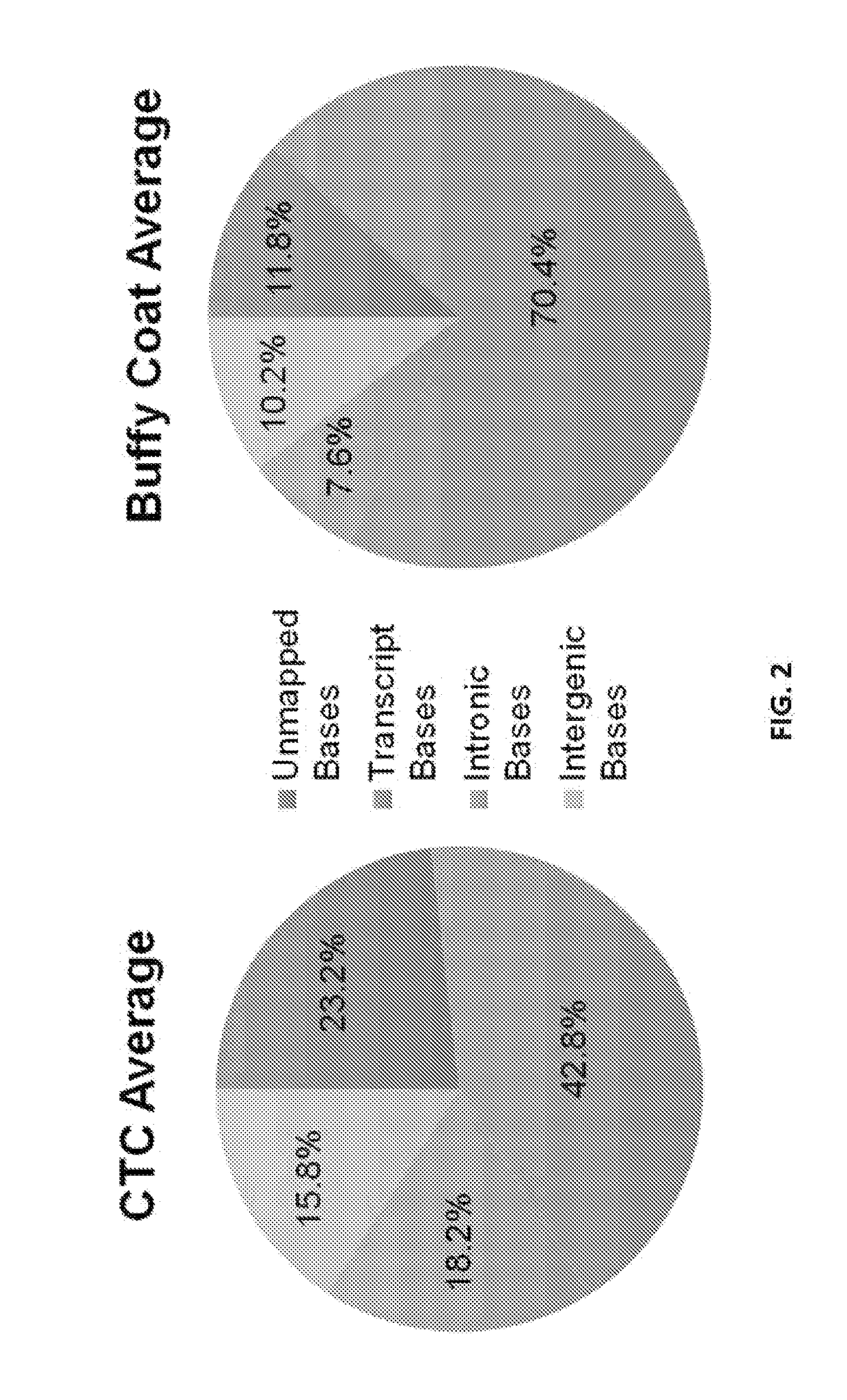Methods for identifying androgen receptor splice variants in subjects having castration resistant prostate cancer
a prostate cancer and androgen receptor technology, applied in the field of methods for identifying androgen receptor splice variants in subjects with castration resistant prostate cancer, can solve the problems of difficult management of poor identification of the genomic profile of ctcs from prostate cancer (pca), and difficult to manage advanced and metastatic disease. achieve the effect of high throughput sequencing
- Summary
- Abstract
- Description
- Claims
- Application Information
AI Technical Summary
Benefits of technology
Problems solved by technology
Method used
Image
Examples
example 1
[0086]The genomic profile of circulating tumor cells isolated from prostate cancer patients is poorly defined. One of the main challenges is the rarity of the target cells. To address this challenge, the present example focused on men with high disease burden and thus likely to have high number of circulating tumor cells compatible with genomic analysis. The RNA profile of circulating tumor cells was defined and methods for personalized treatment were developed.
[0087]Patients with metastatic prostate cancer progressing on existing therapies were enrolled into this study under an IRB approved protocol. Circulating tumor cells were isolated through magnetic beads coated with prostate epithelial and tumor-cell specific antibodies. Five milliliter of blood of fresh blood was used to make a single preparation of RNA. Following quality assessment and initial evaluation, qualified RNA specimens were subjected to 100 bp paired-end RNA-seq. Sequencing data was analyzed using RSEM and SpliceM...
PUM
| Property | Measurement | Unit |
|---|---|---|
| Time | aaaaa | aaaaa |
| Electrical resistance | aaaaa | aaaaa |
| Therapeutic | aaaaa | aaaaa |
Abstract
Description
Claims
Application Information
 Login to View More
Login to View More - R&D
- Intellectual Property
- Life Sciences
- Materials
- Tech Scout
- Unparalleled Data Quality
- Higher Quality Content
- 60% Fewer Hallucinations
Browse by: Latest US Patents, China's latest patents, Technical Efficacy Thesaurus, Application Domain, Technology Topic, Popular Technical Reports.
© 2025 PatSnap. All rights reserved.Legal|Privacy policy|Modern Slavery Act Transparency Statement|Sitemap|About US| Contact US: help@patsnap.com



